I enjoy bonsai exhibits best when I can walk around with a friend and talk about the trees on display. It’s fun to find exciting trees and try and identify what makes them special. A friend of mine wondered how the delicate redwood below could survive the drive to and from the show – an equally good question. I was intrigued by the form of the tree. It suggests the height of redwoods in nature and at the same time exhibits characteristics common to many collected bonsai – interesting deadwood – that suggests a struggle against the elements.

Coast redwood
Taking the time to photograph the trees on display makes me think a little about how each tree is styled. I essentially try to find each tree’s front and identify the best height from which to make the photographs. But there are plenty of other options. I’m curious to hear what readers would most like to see: more close ups and displays? More shohin and accents? I’m also curious what you’d like to read: more information about each tree? Elementary critiques? No text whatsoever? I’m open to suggestion.
For the time being, here are some more photos of the bonsai on display at Redwood Empire Bonsai Society’s 28th annual show.
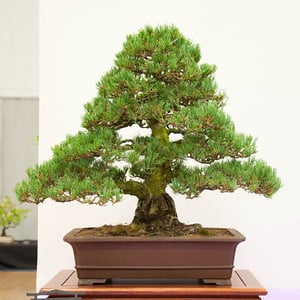
White pine – 41 years
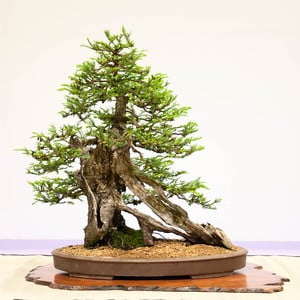
Coast redwood – 87 years
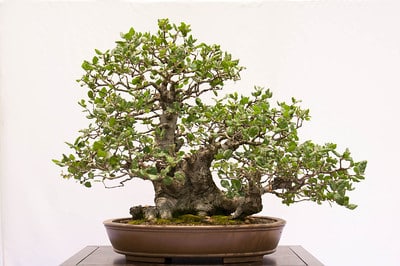
Live oak
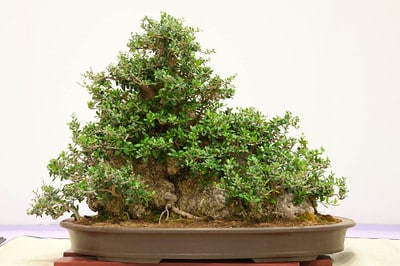
Olive – 59 years
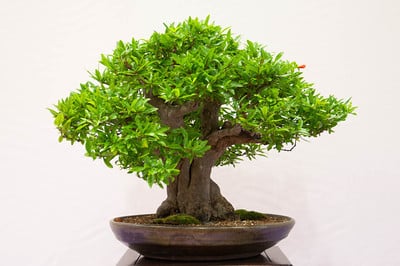
Pomegranate
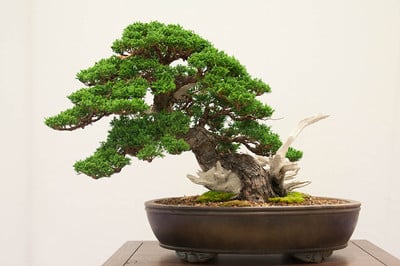
Shimpaku – 20 years
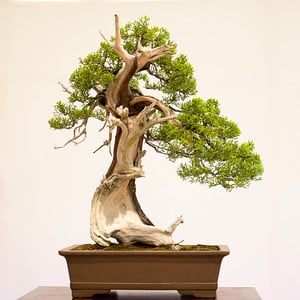
California juniper – 500-600 years
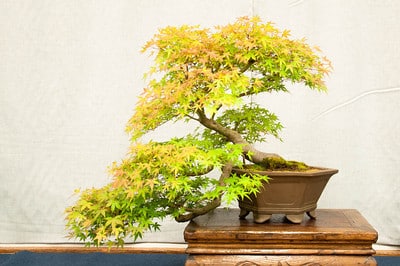
Japanese maple
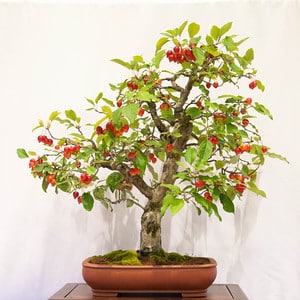
Plum
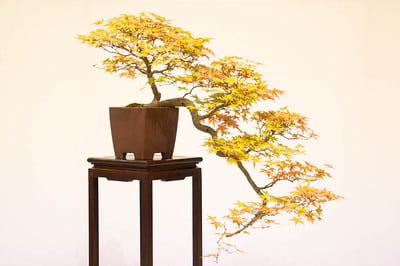
Japanese maple
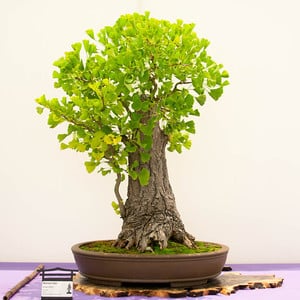
Ginkgo – 83 years
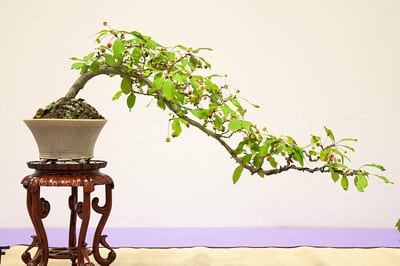
Prunus? Malus?
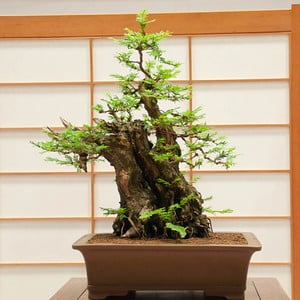
Coast redwood – 50 years
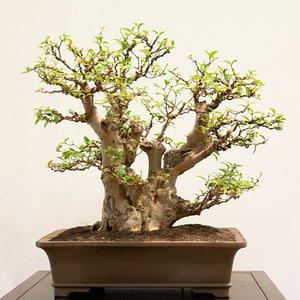
Privet – 20 years
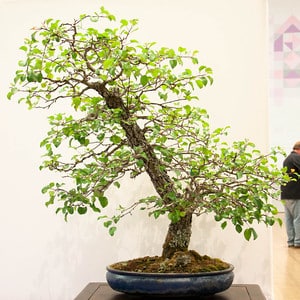
Pear – 17 years
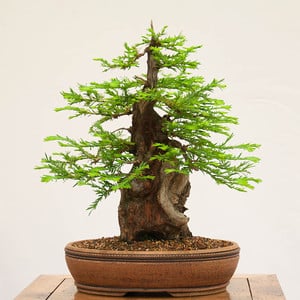
Coast redwood
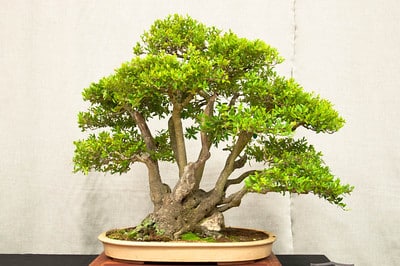
Yaupon holly – 52 years
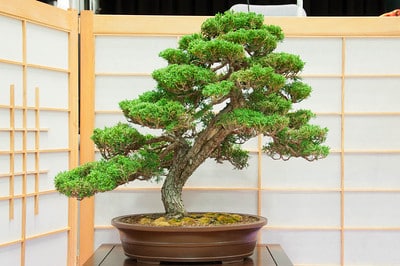
Shimpaku – 45 years
Subscribe to Bonsai Tonight
New Posts Delivered Every Tuesday and Friday
Ryan says
Jonas,
I think your pictures are great and I’m glad there are people like you who attend so many shows and are willing to take the time to document them, even if it’s only a few trees. Maybe you could select a few trees to critique and open it up for discussion. Also, maybe you could include trees that won awards and we could compare and contrast what made those trees stand out among all the rest. I would also mention that photos of not just the trees, but their displays might be helpful. I feel that although one tree might be better than another compared side by side, the lesser tree could outshine the other if displayed correctly with enough vision impact at a show. Right or wrong? Well, there are just a few suggestions.
Besides all the topics I raised above, here is the some food for thought…. With the trees shown in the particular post…I feel that the trunks of most the trees are exquisite! Thick, old, interesting trunks with lots of movement. However, many of the trees seem to be underdeveloped. The structure is there for great bonsai, but it seems that the some of the trees were displayed prematurely. Does it not seem that many of the trees are sparse, lacking branch ramification, and foliage maturity? It appears that some of the trees look as if they were just styled and placed into a good pot. For example, lets compare the first redwood to the last redwood in your post. Both have interesting, old trunks (one more obviously interesting than the other, but lets put that aside for right now). The first tree has great ramification and looks more mature (the cones add a great feel of age and maturity), but the second looks as if all the foliage was just one or two years of good healthy growth. Are trees not to be displayed at their best while at a show? Maybe I’m crazy….maybe I’m not. What do you think?… …
Bruce says
Jonas…I very much appreciate the time and effort required to bring us this quality bonsai info.
For me? I’m happy with the way it is.
Bruce
George Haas says
Jonas,
Photographing a show is no easy task. However, you always seem to capture the best shots of the trees. Your posts are always informative. Taking on the REBS’ annual bonsai show is quite difficult with other 200 trees on display. REBS does not judge its trees and presents no awards. The club strives for quality bonsai at all levels of experience. There are designated areas for trees in training. The club attempts to educate the public by displaying trees in various stages of bonsai development. The two coast redwoods are perfect examples of trees exhibited by a veteran bonsai artist and instructor and a newer member. The Japanese maples are examples of trees being cared for as bonsai for over 40 years. I believe your posts capture the essential parts of any show. The gallery of trees in this post also shows the variety of species represented in the REBS show. There are other parts – shohin, tokonoma, accents, art objects, as well. There are story trees like the example in your previous post of REBS where the owner of the cork bark oak grew his bonsai from an acorn over 40 years. I’d like to see more coverage of such trees as there are many stories to tell.
George
Justin says
“I’m curious to hear what readers would most like to see: more close ups and displays? More shohin and accents? I’m also curious what you’d like to read: more information about each tree? Elementary critiques? No text whatsoever? I’m open to suggestion.”
The photos you take of the many various trees are fascinating. That draws me in to your posts. Secondly I seem to pick up ideas to apply or at least think about for a bit through the day. And to come to see if I can make sence of the exhibits and try to fathom making my own collection.
I’m curious to know how the watering rotines for various trees is done. Redwood vs. A grape or whatever. Any science behind how the deadwood helps or hinders the tree. Maybe take a style and explain some highlights of one over the other. To me they are all amazing, I’m still not sure how anyone can judge one over the other.
And perhaps how to harvest one from the wild and keep it alive in a colder climate like Maine.
Thanks for the great posts, great stuff
Marty says
I enjoy your commentary on the trees that you picture. There are often things seen in person that do not show up well in the picture. Does not need to be a critique, but more of an expanded caption to capture your impression of the tree, the display, etc. beyond what shows up in the picture.